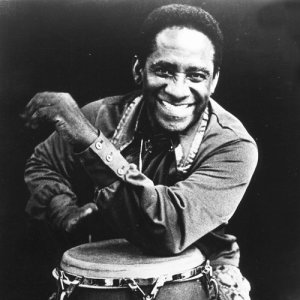
Mongo Santamaria
12 FollowersRamón "Mongo" Santamaría Rodríguez (April 7, 1917 – February 1, 2003) was a Cuban percussionist and bandleader who spent most of his career in the United States. Primarily a conga drummer, Santamaría was a leading figure in the pachanga and boogaloo dance crazes of the 1960s. His biggest hit was his rendition of Herbie Hancock's "Watermelon Man", which was inducted into the Grammy Hall of Fame in 1998. From the 1970s, he recorded mainly salsa and Latin jazz, before retiring in the late 1990s.Mongo learned to play the congas as an amateur rumba musician in the streets of Havana. He then learned the bongos from Clemente "Chicho" Piquero and toured with various successful bands such as the Lecuona Cuban Boys and Sonora Matancera In 1950, he moved to New York City, where he became Tito Puente's conguero and in 1957 he joined Cal Tjader's band. He then formed his own charanga, while at the same time recording some of the first rumba and Santería music albums. By the end of the decade, he had his first pachanga hit, "Para ti". He then became a pioneer of boogaloo with "Watermelon Man" and later signed record deals with Columbia, Atlantic and Fania. He collaborated with salsa artists and became a member of the Fania All-Stars, often showcasing his conga solos against Ray Barretto. In his later years, Santamaría recorded mostly Latin jazz for Concord Jazz and Chesky Records.
Read moreAbout Mongo Santamaria :
Relish the songs of Mongo Santamaria on Joox anytime! Whenever we talk about an artist with amazing songs and albums, we cannot afford to miss one name viz Mongo Santamaria. Mongo Santamaria is one of the popular artists having 12 followers. If you too are looking for a destination to find Mongo Santamaria songs then look no more, at Joox we present an incredible compilation of Mongo Santamaria music videos and songs with lyrics that you would truly enjoy!





